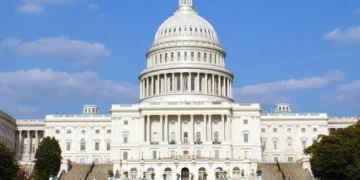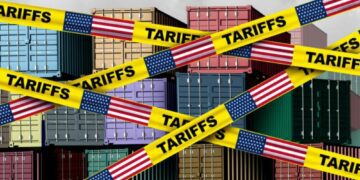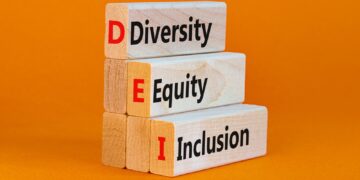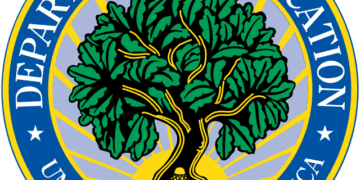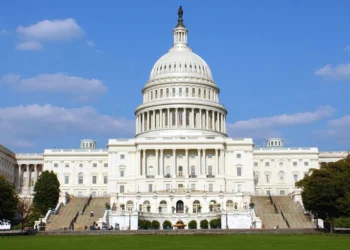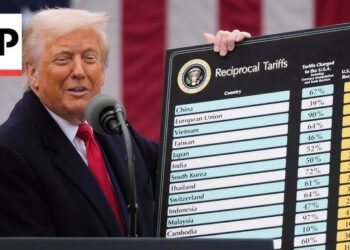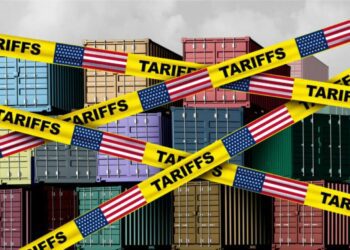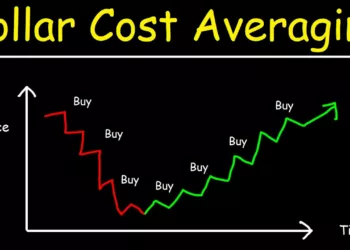The Illusion of Presidential Elections
When we think about how a president comes to power in a democratic nation, most of us envision a straightforward process: candidates campaign, citizens vote, and the winner takes office. However, a provocative quote challenges this simplistic view: “Presidents are selected, not elected.” This statement, often attributed to Franklin D. Roosevelt, suggests a far more complex and potentially disturbing reality behind presidential ascensions.
In this comprehensive exploration, we’ll delve into the various factors that influence who becomes president, examining the hidden mechanisms that may indeed “select” our leaders long before we cast our votes. From the role of political parties to the influence of money in politics, we’ll uncover the intricate web that shapes presidential outcomes.
The Power of Party Politics: How Presidents Are Chosen Before You Vote
The President-Making Machine of Political Parties
Political parties play a crucial role in determining who becomes president, often long before the general election takes place. This process of selection within parties is a key aspect of how presidents may be “selected” rather than purely elected.
The Primary Process: Narrowing the Field
The primary elections and caucuses are the first major hurdle for presidential hopefuls. These contests, organized by the political parties, serve to narrow down the field of candidates to a single nominee for each party. However, this process is far from a simple popularity contest among party members.
“The primary process is like a gauntlet that candidates must run, testing not just their appeal to voters, but their ability to navigate the complex landscape of party politics.” – Political analyst
Factors that influence success in primaries include:
- Name recognition
- Fundraising ability
- Support from party insiders
- Media coverage
- Campaign organization
These factors often favor candidates who are already well-connected within the party structure or who have significant personal wealth or backing from wealthy donors.
Superdelegates: The Party’s Insurance Policy
In the Democratic Party, the role of superdelegates has been particularly controversial. These party insiders, including elected officials and party leaders, are not bound by primary results and can support whichever candidate they choose at the party convention.
While the influence of superdelegates has been reduced in recent years, their very existence highlights the party’s desire to maintain some control over the nomination process.
The Invisible Primary: Courting Party Elites
Long before the first primary vote is cast, potential candidates engage in what political scientists call the “invisible primary.” This period involves:
- Meeting with party leaders and influential donors
- Securing endorsements from key figures
- Building relationships with party operatives and strategists
- Assembling a campaign team
Success in the invisible primary can provide a significant advantage when the official campaign begins. It’s during this phase that party elites may begin to coalesce around certain candidates, effectively “selecting” them as the preferred nominees.
The Almighty Dollar: How Money Shapes Presidential Races
The Staggering Costs of Running for President
Running for president is an incredibly expensive endeavor. The costs have risen dramatically over the years, creating a significant barrier to entry for potential candidates.
Campaign Spending Over Time
Let’s look at the total spending by presidential candidates and outside groups in recent election cycles:
| Election Year | Total Spending (Billions USD) |
|---|---|
| 2008 | 1.8 |
| 2012 | 2.6 |
| 2016 | 2.4 |
| 2020 | 14.4 |
The astronomical increase in spending for the 2020 election is particularly noteworthy, demonstrating the ever-growing importance of money in presidential politics.
The Influence of Big Donors and Super PACs
The role of large donors and Super PACs (Political Action Committees) in funding presidential campaigns has raised concerns about the outsized influence of wealthy individuals and special interests in the political process.
Super PACs: Unlimited Spending Power
Super PACs, which can raise and spend unlimited amounts of money to support or oppose candidates, have become increasingly prominent in presidential elections since the 2010 Citizens United Supreme Court decision.
[Wealthy Donors] –> [Super PACs] –> [Independent Expenditures] –> [TV Ads] –> [Digital Advertising] –> [Get Out The Vote Efforts] –> [Cannot Coordinate Directly with Campaigns]
While Super PACs are legally prohibited from coordinating directly with campaigns, they can still have a significant impact on the election through independent expenditures.
The Catch-22 of Campaign Finance
The need for extensive funding creates a paradoxical situation for presidential candidates:
- To be viewed as a serious contender, a candidate needs to raise significant amounts of money.
- To raise significant amounts of money, a candidate often needs to be viewed as a serious contender.
This dynamic can create a self-fulfilling prophecy, where candidates who are initially favored by wealthy donors or party elites gain an early advantage that becomes difficult for others to overcome.
The Media’s Role: Kingmakers or Mirrors?
The Power of Media Coverage in Shaping Perceptions
The media plays a crucial role in how presidential candidates are perceived by the public. The amount and type of coverage a candidate receives can significantly impact their chances of success.
The “Invisible Primary” in the Media
Even before official campaigning begins, potential candidates jockey for media attention and favorable coverage. This “invisible primary” in the media landscape can help shape public perception and establish certain candidates as frontrunners.
“The media doesn’t tell people what to think, but it does tell them what to think about.” – Bernard Cohen, political scientist
Media Bias and Its Impact
While most reputable news organizations strive for objectivity, various forms of bias can still influence coverage:
- Selection bias: Choosing which stories to cover
- Framing bias: How stories are presented
- Statement bias: The tone used in reporting
These biases, whether intentional or not, can shape public opinion about candidates and influence the election process.
The Rise of Social Media and Its Consequences
Social media platforms have dramatically changed the landscape of political communication, allowing candidates to bypass traditional media gatekeepers and speak directly to voters.
Social Media Followers of 2020 Presidential Candidates
| Candidates | Social Media Followers (Millions) |
| Donald Trump | 88.7 |
| Joe Biden | 21.6 |
| Bernie Sanders | 17.7 |
| Elizabeth Warren | 9.8 |
| Pete Buttigieg | 3.3 |
While social media has democratized access to information, it has also created new challenges:
- The spread of misinformation and “fake news”
- Echo chambers that reinforce existing beliefs
- The ability for foreign actors to influence elections
These factors add another layer of complexity to how presidents may be “selected” through the shaping of public opinion.
The Electoral College: A System That Selects Presidents?
Understanding the Electoral College
The Electoral College system in the United States adds another dimension to the idea that presidents are “selected” rather than directly elected by the people.
How the Electoral College Works
- Each state is allocated a number of electors based on its total number of representatives in Congress.
- In most states, the candidate who wins the popular vote receives all of that state’s electoral votes.
- A candidate needs 270 electoral votes to win the presidency.
This system can lead to situations where a candidate wins the presidency without winning the national popular vote, as happened in 2000 and 2016.
The Impact of Swing States
The Electoral College system places outsized importance on a handful of “swing states” that could go either way in an election. This focus on swing states can lead to:
- Candidates tailoring their messages to appeal to voters in these states
- Disproportionate campaign spending in swing states
- Potential neglect of issues important to voters in “safe” states
Campaign Visits to States in 2016 (After Party Conventions)
| State | Trump Visits | Clinton Visits |
|---|---|---|
| Florida | 26 | 19 |
| Pennsylvania | 23 | 22 |
| Ohio | 22 | 17 |
| North Carolina | 23 | 16 |
| Michigan | 13 | 6 |
| Virginia | 10 | 5 |
| New York | 4 | 5 |
| California | 1 | 2 |
This data clearly shows how the current system encourages candidates to focus their efforts on a small number of competitive states, potentially “selecting” a president based on the preferences of a narrow slice of the electorate.
The Influence of Special Interests and Lobbying
Follow the Money: How Special Interests Shape Policy
Special interest groups and lobbyists play a significant role in shaping policy priorities and legislative agendas. This influence extends to presidential politics, potentially affecting which candidates receive support and how they govern if elected.
Top Lobbying Industries (2020)
- Pharmaceuticals/Health Products: $306 million
- Electronics Manufacturing & Equipment: $161 million
- Insurance: $151 million
- Oil & Gas: $112 million
- Business Associations: $105 million
Source: OpenSecrets
The Revolving Door: From Government to Industry and Back
The “revolving door” between government and private sector jobs creates potential conflicts of interest and can blur the lines between public service and private gain.
[Government Official] –>|Leaves office|
[Private Sector Job] –>|Uses connections|
[Lobbying] –>|Influences policy|
[Government Policy] –>|Creates opportunities|
[New Government Appointees] –>|Cycle repeats|
This cycle can lead to a system where future presidents are “selected” from a pool of individuals with strong ties to various industries and special interests.
The Role of Foreign Influence in Presidential Elections
A Global Game: International Stakes in U.S. Elections
The outcome of U.S. presidential elections has significant implications for countries around the world. This global impact creates incentives for foreign actors to attempt to influence the selection of American presidents.
Methods of Foreign Influence
- Cyber attacks and hacking attempts
- Disinformation campaigns on social media
- Covert funding of political groups or candidates
- Diplomatic pressure and public statements
Case Study: Russian Interference in the 2016 Election
The 2016 U.S. presidential election brought the issue of foreign interference to the forefront of public consciousness. The Mueller Report and subsequent investigations revealed a coordinated effort by Russian actors to influence the election outcome.
“The Russian government interfered in the 2016 presidential election in sweeping and systematic fashion.” – Mueller Report
This interference included:
- Hacking and releasing emails from the Democratic National Committee
- Creating fake social media accounts to spread divisive content
- Attempting to access state voting systems
The revelation of these efforts has led to increased scrutiny of foreign influence in subsequent elections and raised questions about the true independence of the American electoral process.
The Power of Incumbency: A Built-in Advantage
The Incumbent’s Edge: Why Presidents Often Win Re-election
Sitting presidents have several advantages when seeking re-election, which can be seen as another way in which presidents are “selected” rather than purely elected on a level playing field.
Advantages of Incumbency
- Name recognition and familiarity
- The ability to use the office for media exposure
- A record of accomplishments to campaign on
- An established fundraising network
- The power to shape events and policy leading up to the election
Historical Re-election Rates
Since 1900, incumbent presidents who have sought re-election have won about 65% of the time. This high success rate suggests that the power of incumbency plays a significant role in determining who becomes president.
Incumbent President Re-election Outcomes (1900-2020)
- Re-elected : 65
- Defeated : 35
The Impact of Voter Suppression and Gerrymandering
Manipulating the Electorate: Tactics That Shape Outcomes
While not directly related to presidential elections, voter suppression and gerrymandering can have indirect effects on who becomes president by influencing the overall political landscape.
Common Voter Suppression Tactics
- Strict voter ID laws
- Purging voter rolls
- Closing polling places in certain areas
- Limiting early voting options
- Spreading misinformation about voting procedures
Gerrymandering: Drawing the Lines of Power
Gerrymandering, the practice of drawing electoral districts to favor one party, primarily affects congressional and state legislative races. However, it can indirectly impact presidential elections by:
- Shaping the pool of potential presidential candidates
- Influencing state-level policies that affect voting rights and procedures
- Creating a disconnect between the popular vote and political representation
These practices contribute to a system where the outcome of elections, including presidential races, may be partially “selected” through the manipulation of the electoral process itself.
The Complex Reality of Presidential Selection
As we’ve explored throughout this blog post, the process by which presidents come to power is far more complex and nuanced than a simple election. The quote “Presidents are selected, not elected” highlights the many forces at play in shaping who ultimately sits in the Oval Office.
From the influence of political parties and big money donors to the role of media and foreign actors, numerous factors contribute to the “selection” of presidents long before voters cast their ballots. The Electoral College system, the power of incumbency, and even tactics like voter suppression further complicate the picture.
While it’s important to acknowledge these realities, it’s equally crucial to recognize the continued importance of citizen participation in the democratic process. Awareness of these influencing factors can empower voters to make more informed decisions and push for reforms that create a more truly representative system.
As we look to future presidential elections, the challenge for American democracy will be to navigate these complex forces while striving to uphold the ideal of a government that is truly “of the people, by the people, for the people.”
For further reading, check out the following:
- Unveiling the Flaws: Why the Electoral College Persists Despite Its Imperfections
- How to Determine Your Political Ideology
Disclaimer: The views and opinions expressed in this blog post are intended for informational and educational purposes only. This article presents a critical analysis of various factors that influence presidential elections and is based on publicly available information and academic theories. It does not represent a comprehensive or definitive account of the electoral process.
The use of the phrase “Presidents are selected, not elected” is meant to provoke thought and discussion about the complexities of the political system, not to delegitimize the democratic process or any specific election outcomes. Readers are encouraged to conduct their own research, consult multiple sources, and form their own opinions on this topic.
This blog post does not endorse any particular political party, candidate, or ideology. Any references to specific individuals, organizations, or events are used as examples to illustrate broader concepts and should not be construed as personal accusations or statements of fact.
The author and publisher of this blog post are not responsible for any actions taken by readers based on the information provided herein. We strongly encourage all citizens to participate in the democratic process and to stay informed about political issues through a variety of reputable sources.
























